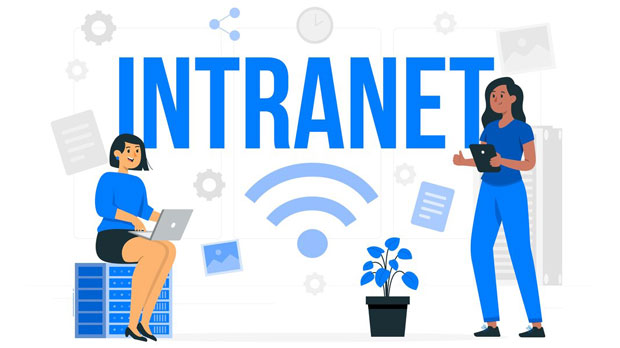When it comes to enterprise-level data scraping, choosing the right proxy solution is a critical decision. The two main options available to businesses are free proxies and paid proxies. While free proxies are often seen as a cost-effective solution, they come with a range of limitations that could hinder large-scale data extraction tasks. On the other hand, paid proxies offer better performance, security, and reliability, but they come at a higher cost. In this article, we will analyze the key differences between free and paid proxies, exploring their advantages and disadvantages to help enterprises make an informed choice based on their specific needs. Understanding Proxies in the Context of Data ScrapingBefore delving into the comparison of free and paid proxies, it is essential to understand what proxies are and why they are used in data scraping. Proxies act as intermediaries between a user’s device and the internet, masking the user’s real IP address and routing traffic through a different server. In data scraping, proxies help bypass geo-blocks, prevent IP bans, and avoid rate-limiting, enabling large-scale data extraction from websites.In the world of data scraping, proxies are indispensable tools. Without proxies, scraping large volumes of data would lead to quick IP bans or throttling, making it difficult to collect the necessary data efficiently. Now, let’s examine the key differences between free and paid proxies to determine which is more suitable for enterprise-level operations.Free Proxies: Cost-Effective but Limited in FunctionalityFree proxies are widely available and are often used by individuals or small businesses looking to minimize costs. These proxies are typically offered without any charge but come with several significant drawbacks that can pose challenges for enterprise-level data scraping.Advantages of Free Proxies1. No Cost Involved: The biggest advantage of free proxies is the lack of a financial investment. This makes them attractive to businesses or individuals working with limited budgets.2. Quick Setup: Free proxies are usually easy to set up and can be ready for use almost immediately, which can be advantageous for short-term or low-level scraping projects.3. Variety of Options: Many free proxy services offer a variety of proxies to choose from, which may provide some flexibility for different data scraping needs.Drawbacks of Free Proxies1. Poor Performance: Free proxies often experience slow speeds and high latency, which can result in significant delays in data scraping. The lack of dedicated resources means that these proxies are often shared among many users, leading to congestion and poor performance.2. Limited Security and Privacy: Free proxies typically lack encryption and other security features, which can expose users to risks such as data breaches, man-in-the-middle attacks, and compromised privacy.3. High Risk of IP Bans: Since free proxies are used by many individuals, they are more likely to be detected and blacklisted by websites. This can lead to frequent IP bans, which can disrupt the data scraping process.4. Unreliable Availability: Free proxies may have limited uptime and availability. Since they are often maintained by volunteers or non-professional entities, there is no guarantee that they will be operational when needed.Paid Proxies: Superior Performance and ReliabilityPaid proxies, while more expensive, offer several key benefits that make them the preferred choice for enterprise-level data scraping operations.Advantages of Paid Proxies1. Better Performance and Speed: Paid proxies offer superior speed and stability, with dedicated bandwidth and lower latency. This is crucial for businesses that need to scrape large amounts of data quickly and efficiently.2. Enhanced Security and Anonymity: Paid proxy services often provide advanced encryption and secure connections, ensuring that data remains protected during the scraping process. They also offer better anonymity and privacy, reducing the risk of exposing sensitive information.3. Dedicated IP Addresses: Many paid proxy services offer dedicated or private IP addresses. This means that businesses have exclusive use of an IP, reducing the likelihood of encountering IP bans or throttling that are common with free proxies.4. Reliable Uptime: Paid proxy services typically have high reliability and uptime, ensuring that businesses can run their data scraping operations continuously without interruptions.5. Global Coverage: Paid proxy providers often offer proxies from a wide range of countries and regions, enabling businesses to collect data from various geographical locations without any issues.6. Customer Support: With paid proxies, businesses receive customer support, which can be crucial when dealing with technical issues or needing assistance with setup and maintenance.Drawbacks of Paid Proxies1. Higher Costs: The most significant drawback of paid proxies is the cost. These services can be expensive, especially for large-scale operations, which could make them less suitable for smaller businesses or those with tight budgets.2. Complex Setup: While many paid proxy services offer easy-to-follow guides, the setup process can still be more complicated compared to free proxies, especially for businesses that lack technical expertise.3. Potential Overuse of Resources: Some paid proxy services may impose usage limits, and if an enterprise exceeds those limits, it may incur additional fees or be throttled. This is important for businesses to consider when scaling their data scraping operations.Free vs Paid Proxies: Which is Better for Enterprise-Level Data Scraping?When deciding between free and paid proxies, businesses need to evaluate their specific data scraping needs. For enterprise-level scraping, where large volumes of data need to be extracted consistently and securely, paid proxies are generally the better choice.Scalability and EfficiencyEnterprise-level data scraping requires scalability and efficiency. Paid proxies, with their superior performance and dedicated resources, are well-suited for handling large-scale scraping tasks. Free proxies, due to their shared nature and slow speeds, often fail to meet these demands, leading to inefficiency and potential disruptions.Reliability and SecurityWhen dealing with sensitive business data, security is a top priority. Paid proxies offer enhanced security features, such as encryption and private IP addresses, which help protect both the data being scraped and the company’s digital assets. Free proxies lack these security features and pose a higher risk of data breaches, making them unsuitable for enterprises dealing with valuable or confidential data.Cost ConsiderationsWhile paid proxies come with a higher cost, businesses should weigh this against the potential costs of using free proxies. The risk of IP bans, slow performance, and unreliable uptime with free proxies can result in wasted time, lost opportunities, and higher operational costs in the long run. In contrast, paid proxies provide a more consistent and efficient service, delivering better ROI for enterprise-level data scraping.In summary, while free proxies can be useful for smaller-scale, short-term scraping projects, they are not ideal for enterprise-level data scraping. The risks associated with free proxies, including poor performance, security vulnerabilities, and high chances of IP bans, make them unsuitable for large-scale operations. Paid proxies, though more expensive, offer businesses the reliability, speed, and security necessary for effective and efficient data scraping. For enterprises that rely on consistent, large-scale data extraction, paid proxies are the most reliable and scalable solution.
Nov 07, 2025



































































